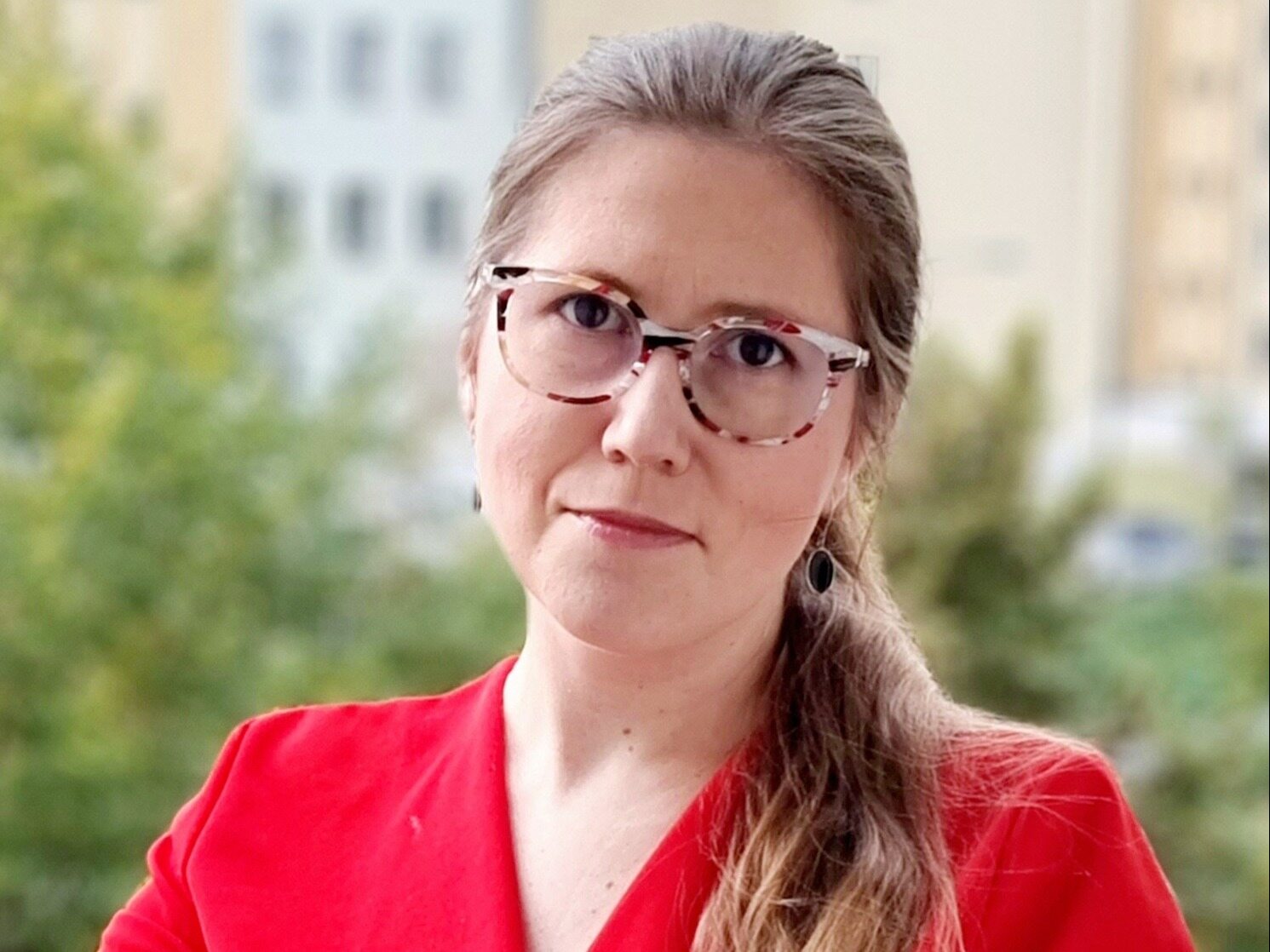A geneticist has left the laboratory and is changing the lives of EB patients. “It’s a dramatic disease”

Dr. Katarzyna Wertheim-Tysarowska is an example of a scientist who does not confine herself to the laboratory. For 17 years he has been investigating the secrets of EB – a rare disease with a dramatic course. However, it does not focus solely on genetics. He successfully cooperates with patient organizations and engages in social assistance, improving the quality of life of patients and their families.
Aleksandra Zalewska-Stankiewicz, “Wprost”: Who are the “butterfly children”?
Ph.D. Katarzyna Wertheim-Tysarowska*: These are small patients suffering from a rare, incurable genetic disease – epidermolysis bullosa, abbreviated as EB. Their skin is actually as fragile and delicate as a butterfly’s wings. There are many blisters and erosions on their skin and mucous membranes. They arise spontaneously or are triggered by even the slightest trauma, touch or hug. The consequence is wounds that are difficult to heal.
On the EB Foundation website, I saw a video in which 14-year-old Zosia talks about her illness. You can see that the patients suffer a lot.
Their life consists of replacing dressings – it can last even several hours a day. Wound care is a real challenge – they must be disinfected, pierced with a needle and secured with special dressings. Regular patches would irritate patients’ skin and even peel it off. There is no breathing from this disease, when one wound heals, another one is created. Blisters do not appear only on the skin, they can occur in the mouth (on the tongue or palate), in the eye, and also in the esophagus, leading to its narrowing. They are very painful. They can also lead to serious consequences, such as anemia (patients cannot swallow), limb deformities, muscle contractures, but also depression and anxiety disorders.
How did you become interested in EB?
In 2006, I started working at the Department of Medical Genetics of the Institute of Mother and Child (ZGM IMiD). Back then, we didn’t deal with skin issues, but… EB is classified as a dermatological disease. I was looking for a topic for my PhD, and EB patients were not genetically diagnosed at all at that time. Dr. Agnieszka Sobczyńska-Tomaszewska from our Department and prof. Cezary Kowalewski from the Medical University of Warsaw decided to change this. Thanks to this, a research project on EB genetics was started, within which I completed my PhD. Initially, we studied only one type of EB.
Is there more of them?
Yes, there are 4 types of EB, depending on where the blister forms at the dermal-epidermal junction. These are: simple type, junctional type, dystrophic type and Kindler’s syndrome. Moreover, depending on clinical symptoms and mode of inheritance, there are approximately 30 subtypes of EB. We expanded our knowledge, and at the same time, patients from all over Poland began to contact us. In this way, we also started conducting molecular diagnostics of EB in our Department. To date, over 170 families with various forms of EB have been diagnosed in IMiD. There are more of them in Poland, between 200 and 400 families, but there is no exact data.
How is EB inherited?
EB is a genetically determined disease that can be inherited in an autosomal recessive or dominant manner. In the first case, this means that the disease occurs when mutations in both copies of a given gene are inherited from both parents. In such a situation, the parents are only carriers of the mutation and have no symptoms of the disease, but they have a 25% risk of having a child with EB in each pregnancy. In the second type of inheritance – autosomal dominant – a mutation in only one copy of the gene is enough to develop the disease. The risk of transmitting the mutation, and therefore of developing the disease in the child, is in this case 50%. The mutation usually occurs de novo.
What discovery did you make during your research?
We previously knew that EB is a genetically determined disease. There are several known proteins whose damage (due to mutations in the genes encoding them) causes the development of EB. Each of these proteins is encoded by a different gene. During the project, we determined the molecular basis, identified pathogenic mutations in the studied families, and developed a diagnostic algorithm thanks to which it was possible to diagnose patients. Please remember that 18 years ago in Poland, this group of patients did not have a genetic diagnosis at all, and genetic tests for EB were not performed, so there was no molecular verification of the clinical diagnosis.
Thanks to new DNA analysis technologies, we can now simultaneously analyze all known genes whose mutations are responsible for the occurrence of EB. Not so long ago, large-scale studies were not available and each gene was studied individually. These studies were difficult and time-consuming due to the size of the genes. For example, analysis of the COL7A1 gene, responsible for the so-called dystrophic type EB required the analysis of as many as… 118 gene fragments. We have identified, among others: genetic variants responsible for the occurrence of EB most often in our Polish population. From a diagnostic point of view, EB carrier tests were also important. Thanks to this, it was possible to provide genetic counseling and dispel many doubts.
What are the most common doubts?
How is the disease inherited and what is the risk of the disease recurring in the family? Sometimes, after genetic testing, it turns out that the risk is much lower than expected and amounts to only 1-5%. For some mutations, the clinical course of the disease can be predicted. From a scientific point of view, the most interesting were patients with a clinical diagnosis of EB in whom we did not identify any mutations. We hope that by continuing our research, we will describe mutations and the genes in which they occur that have not been associated with the occurrence of EB so far. Remember that the list of genes responsible for this disease is not exhaustive. Thousands of genes are expressed in the epidermis, and the functions of many of them are not yet known. It is also worth mentioning that based on genetic tests, patients can be qualified for therapeutic programs and clinical trials. Currently, this is actually one of the inclusion criteria.
When the project ended, the Lady continued to try to discover more secrets of EB. What guided you?
Although I am not a doctor, but a geneticist, I have seen the enormous suffering of patients who have struggled with EB throughout their lives. For some people, this disease is mild, but there is a group of people who experience real drama. Their skin is affected by 80 percent of the lesions and they need to be bandaged all the time. This disease requires multidisciplinary care – a dermatologist, pediatrician, surgeon, dentist, otolaryngologist, ophthalmologist, cardiologist, nephrologist, dietitian, rehabilitator, and psychotherapist. I noticed that there was a lack of specialists specializing in the treatment of EB. It was different abroad.
It means?
I went to Salzburg for a month, where the EB House, a center specializing in EB, is located. I saw what multidisciplinary care for a patient with EB could look like. They can consult doctors with any problem, not only skin, but also hearing, vision, throat or teeth. Meanwhile, in Poland there was and unfortunately still is a shortage of doctors of many specialties experienced in EB. As a result, many of them are afraid to examine patients suffering from this disease due to the risk of damage to the skin or mucous membranes. This problem was noticed by parents of children with EB. It is thanks to them that the EB Polska Foundation was established. I was also in the founding group.
What does the EB Foundation do?
At the beginning, we started cooperation with Dr. Marcin Malka from the PODOS Wound Treatment Clinic. We started organizing training for patients, mainly on wound care. Training for medical staff was very popular – our foundation team went to the hospital where a child with EB was born and showed in practice what care should look like. Additionally, the so-called the first package for young patients, full of specialized dressings. As you can see, in my case it started with genetic research and ended with the development of a community centered around EB. Although there are still many challenges ahead of us, Poland lacks systemic care for patients with this disease.
However, genetic research has given rise to positive changes. What?
Indeed, several years ago we had patients only with a clinical diagnosis of EB, we knew nothing about genetics then. A milestone was the introduction of genetic tests and the development of a diagnostic scheme for EB patients, which was also appreciated abroad. I was invited – as one of several specialists from around the world – to develop international guidelines.
I am proud that together with the ZGM IMiD team, we have managed to expand our knowledge of the relationship between the clinical picture and the patient’s genotype, which has a direct impact on genetic counseling. At this point, genetics is the standard for diagnosing EB. Thanks to the activities of, among others, The EB Polska Foundation has published neonatological guidelines for patients. A success to which we also contributed was obtaining dressing benefits for patients who use huge amounts of materials for care, and this is very expensive.
What challenges do geneticists face in this matter?
Knowledge about the molecular pathology of EB will contribute to the development of new treatment methods, including targeted treatment. We are planning a scientific project, initially on cellular models, the aim of which will be to eliminate pathogenic mutations in the genes responsible for EB. However, the direction is set by research in the USA, where EB gene therapy has been developed. In gene therapy, the fundamental problem is the targeted delivery of the modified preparation. In the case of EB, this problem was solved by gene therapy in the form of a wound gel. This type of treatment will probably be available in Europe next year. This year, the first drug registered for EB appeared on the market, so this is another step towards developing a treatment for this cruel disease. In Poland, it is currently available only as emergency access to drug technologies. But the first Polish woman has already received this medicine – it’s Zosia, whom you mentioned.
However, the biggest challenge, and not a genetic one, is to guarantee Polish patients proper care. EB patients must have access to a specialized center, and an EB nurse position should be established – following the example of other countries. However, parents of sick children must be provided with professional support, including respite care.
*Katarzyna Wertheim-Tysarowska, MD, PhD, Department of Medical Genetics, Institute of Mother and Child, Laboratory of Hereditary Diseases Research, specialist in laboratory medical genetics, author and co-author of over 50 articles in the field of human genetics and book chapters, winner of the Prime Minister’s award for her doctoral thesis and the awards of the Polish Society of Genetics for her doctoral thesis and publications. Research interests focus on the molecular etiopathogenesis of genetically determined diseases, in particular skin diseases, metabolic diseases and infertility.






